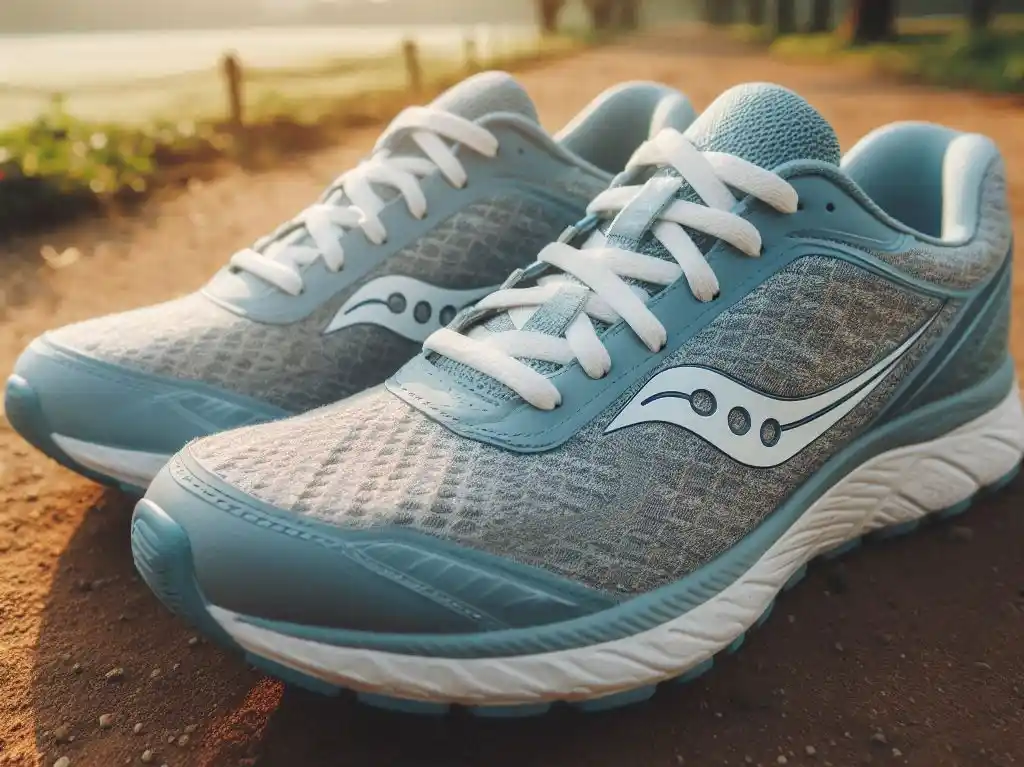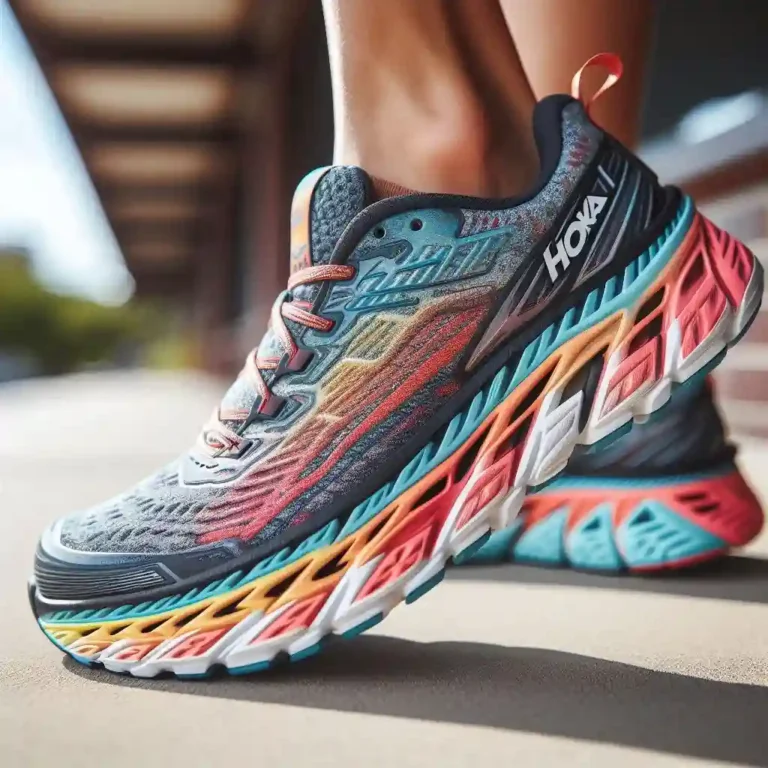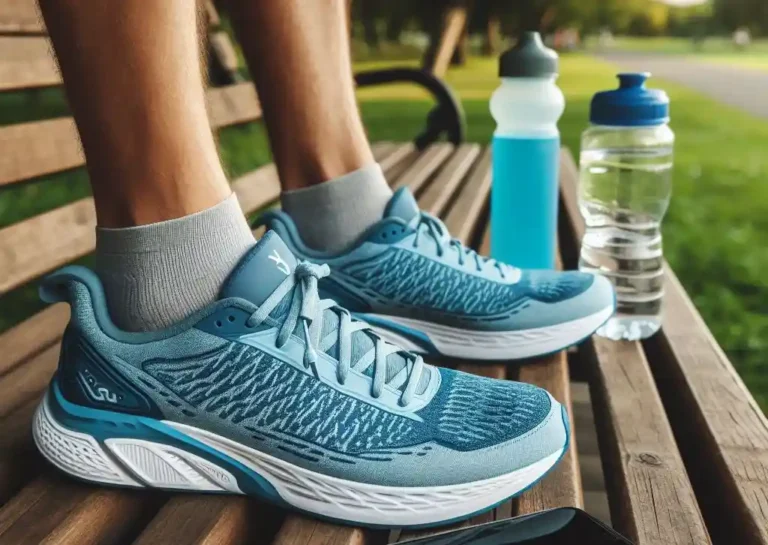On Running vs Saucony: Which is the Better Running Shoe?
On Running vs Saucony: For runners, finding the perfect shoe can be a game-changer. Two of the most popular and respected brands in the running world, On Running and Saucony, have been vying for top spot in the hearts of runners everywhere.
Whether you’re a seasoned marathoner or just starting out on your running journey, choosing the right shoe can make all the difference in your performance, comfort, and overall running experience.
On Running vs Saucony: A Quick Overview

On Running:
- Known for their unique cushioning system, which features a series of small, circular “clouds” that compress and rebound with each step
- Offers a more minimalist, low-profile design with a focus on natural running form
- Generally has a more responsive and springy feel underfoot
- Popular models include the Cloud, Cloud X, and Cloudflow
- Often preferred by runners who prioritize a more natural, efficient stride
Saucony:
- Features a more traditional, chunky midsole design with a focus on support and stability
- Offers a wider range of models to cater to different running styles and preferences, including neutral, support, and stability options
- Known for their EVERUN topsole material, which provides additional cushioning and durability
- Popular models include the Freedom, Guide, and Triumph
- Often preferred by runners who need more support or have high arches
Key differences:
- Cushioning system: On Running’s “cloud” technology vs. Saucony’s traditional midsole design
- Ride feel: On Running tends to be more responsive and springy, while Saucony is often more supportive and stable
- Design focus: On Running prioritizes natural running form, while Saucony emphasizes support and stability
- Model range: Saucony offers a broader range of models to cater to different running styles and preferences
Cushioning and Comfort: Which Brand Offers Better Comfort?
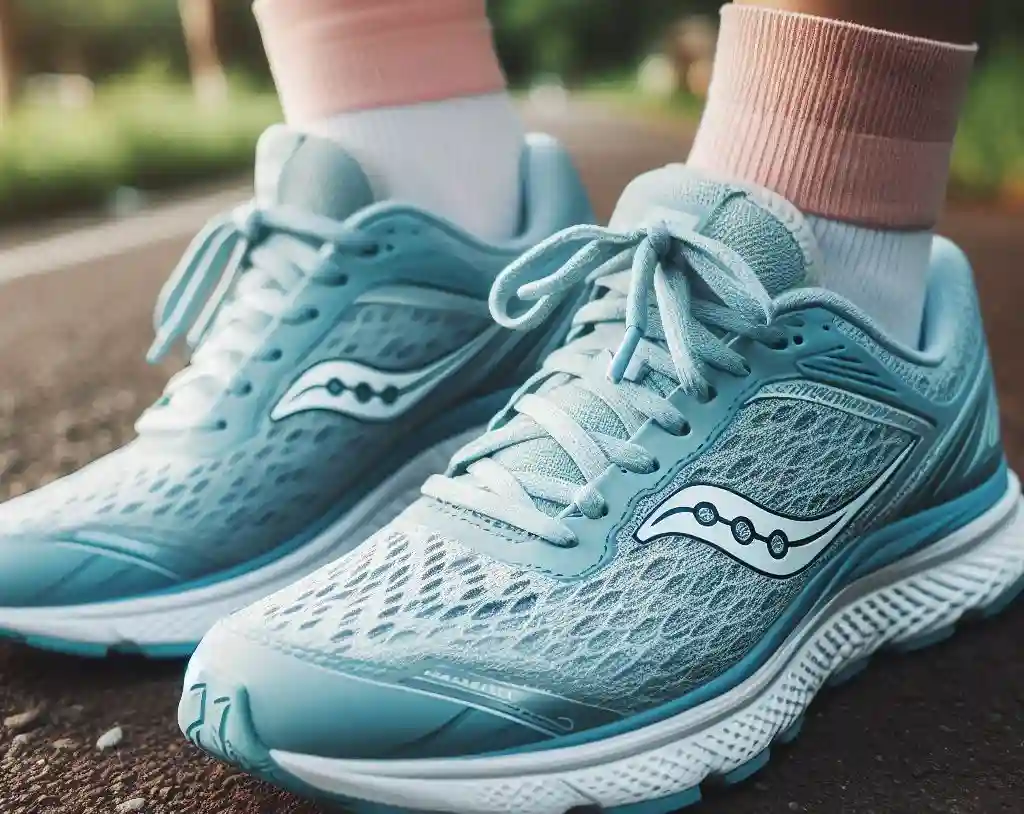
Cushioning
- On Running:
- Unique “cloud” cushioning system provides a soft, responsive ride
- Clouds compress and rebound with each step, absorbing shock and providing a smooth feel
- Cushioning is more pronounced in the heel and midfoot, with a slightly firmer forefoot
- Saucony:
- Traditional midsole design with a focus on support and stability
- EVERUN topsole material adds an extra layer of cushioning and durability
- Cushioning is more evenly distributed throughout the shoe, with a focus on providing a comfortable ride
Comfort
- On Running:
- Upper material is often more minimalist and lightweight, providing a snug, comfortable fit
- Seamless construction and minimal overlays reduce irritation and hotspots
- Heel collar is often more padded and comfortable, with a smooth, seamless transition to the Achilles tendon
- Saucony:
- Upper material is often more substantial and supportive, providing a secure, comfortable fit
- ISOFIT or FORMFIT upper construction provides a comfortable, adaptive fit
- Padded tongue and heel collar provide additional comfort and support
Key differences
- Cushioning style: On Running’s “cloud” system vs. Saucony’s traditional midsole design
- Cushioning distribution: On Running focuses on heel and midfoot cushioning, while Saucony provides more even cushioning throughout the shoe
- Upper material: On Running tends to use more minimalist, lightweight materials, while Saucony uses more substantial, supportive materials
Support and Stability: Which Shoe Reigns Supreme?

Support
- On Running:
- Designed for runners with neutral foot pronation or mild overpronation
- Provides moderate support through the midfoot and heel
- No specific support features, relying on the natural running form and foot strike
- Saucony:
- Offers a range of support options, including neutral, support, and stability models
- Features like the PWRTRAC technology and Support Frame provide additional support and stability
- Models like the Guide and Omni provide more substantial support for runners with moderate to severe overpronation
Stability
- On Running:
- Designed to promote a natural running form and efficient stride
- No specific stability features, relying on the runner’s natural biomechanics
- May not be suitable for runners with severe overpronation or supination
- Saucony:
- Offers stability features like the EVERUN topsole and PWRFOAM midsole to reduce pronation and supination
- Models like the Guide and Omni provide more substantial stability features, including a more supportive heel counter and midfoot strap
- Suitable for runners with moderate to severe overpronation or supination
Key differences
- Support options: Saucony offers a wider range of support options, including neutral, support, and stability models
- Support features: Saucony features like PWRTRAC and Support Frame provide additional support and stability
- Stability focus: On Running focuses on promoting a natural running form, while Saucony prioritizes stability and support for runners with pronation or supination issues
Traction and Grip: Which Shoe Stack Up for Hiking?
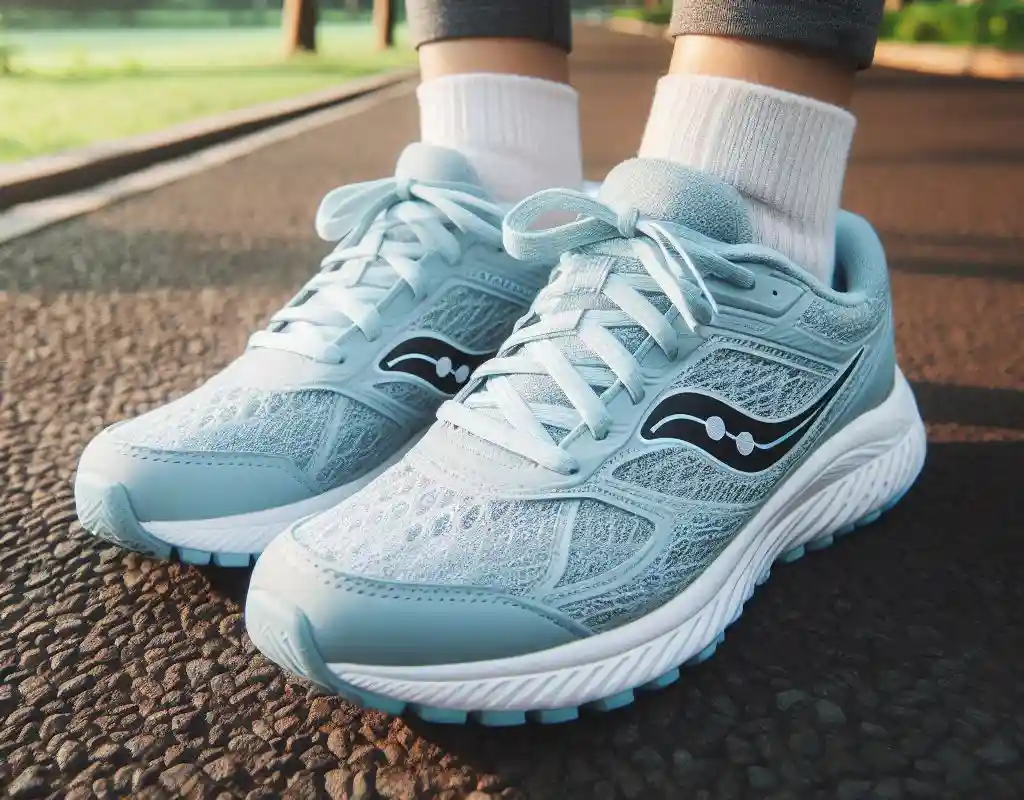
Traction
- On Running:
- Features a unique outsole design with a series of small, circular “pods” that provide traction and grip
- Pods are strategically placed to provide grip on various surfaces, including roads, trails, and tracks
- Outsole material is durable and resistant to wear and tear
- Saucony:
- Features a more traditional outsole design with a focus on durability and traction
- Outsole material is often more substantial and grippy, with a focus on providing traction on various surfaces
- Some models feature a more aggressive tread pattern for improved traction on trails and rough terrain
Grip
- On Running:
- Provides a smooth, consistent ride with a focus on forward momentum
- Grip is more subtle, with a focus on allowing the foot to move naturally
- Suitable for runners who prioritize a smooth, efficient stride
- Saucony:
- Provides a more aggressive grip, with a focus on traction and control
- Grip is more pronounced, with a focus on providing stability and support
- Suitable for runners who need more traction and control, such as trail runners or runners on uneven terrain
Key differences
- Outsole design: On Running’s unique “pod” design vs. Saucony’s more traditional outsole design
- Traction focus: On Running prioritizes smooth, efficient traction, while Saucony focuses on aggressive traction and control
- Grip style: On Running provides a more subtle grip, while Saucony provides a more pronounced grip
Weight and Responsiveness: The Verdict Both The Shoes
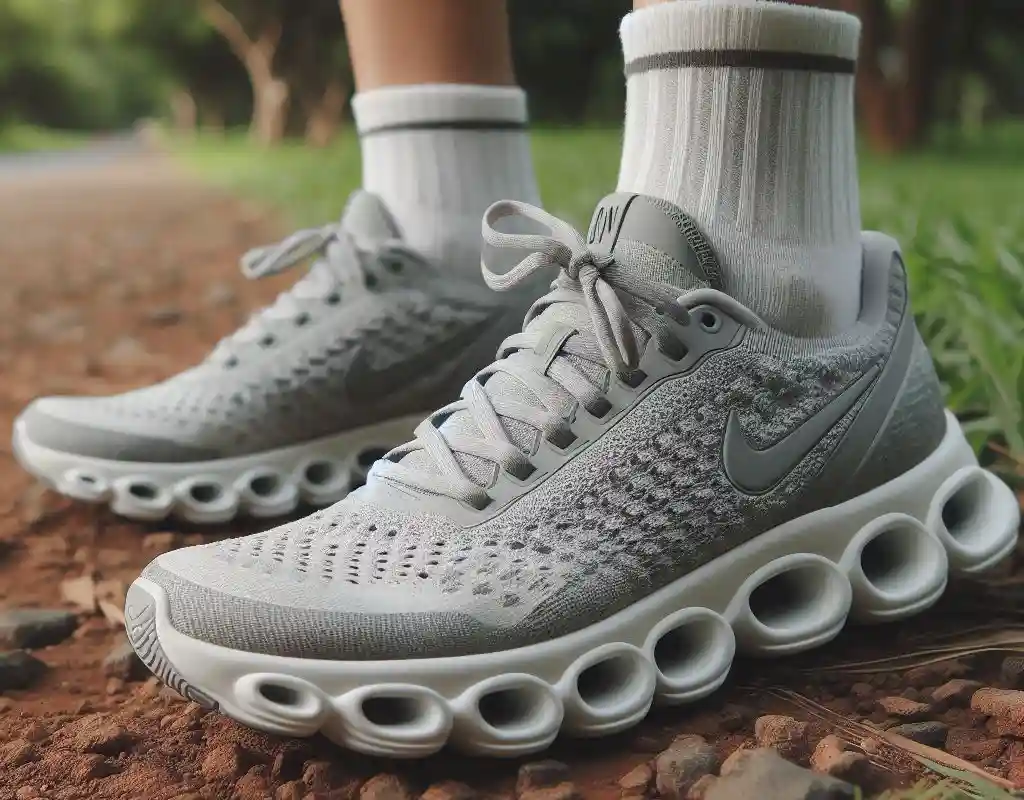
Weight
- On Running:
- Generally lighter in weight, with most models weighing between 8-10 oz (230-280g)
- Designed to be lightweight and efficient, with a focus on natural running form
- Weight is distributed evenly throughout the shoe, providing a balanced feel
- Saucony:
- Generally heavier in weight, with most models weighing between 10-12 oz (280-340g)
- Designed to provide support and stability, with a focus on durability and traction
- Weight is often more substantial in the heel and midfoot, providing additional support and stability
Responsiveness
- On Running:
- Features a responsive midsole that provides a springy, energetic feel
- Designed to promote a natural running form and efficient stride
- Provides a quick, snappy feel with each step
- Saucony:
- Features a more substantial, supportive midsole that provides a smooth, comfortable ride
- Designed to provide support and stability, with a focus on durability and traction
- Provides a more cushioned, comfortable feel with each step
Key differences
- Weight: On Running shoes are generally lighter, while Saucony shoes are heavier
- Responsiveness: On Running shoes are more responsive and springy, while Saucony shoes are more supportive and cushioned
- Design focus: On Running prioritizes natural running form and efficiency, while Saucony prioritizes support and stability
Breathability and Ventilation: Keeping Your Feet Cool and Dry
Breathability
- On Running:
- Features a lightweight, breathable upper material that allows for airflow and moisture transfer
- Mesh panels and perforations provide additional ventilation and breathability
- Designed to keep feet cool and dry during exercise
- Saucony:
- Features a more substantial, supportive upper material that provides structure and stability
- Breathability is still a priority, with mesh panels and perforations providing ventilation
- Designed to provide a balance of support and breathability
Ventilation
- On Running:
- Features a more open, airy design that allows for maximum ventilation and airflow
- Tongue and collar are designed to provide additional ventilation and breathability
- Designed to keep feet cool and dry during high-intensity exercise
- Saucony:
- Features a more substantial, supportive design that provides structure and stability
- Ventilation is still a priority, with mesh panels and perforations providing airflow
- Designed to provide a balance of support and ventilation
Key differences
- Upper material: On Running uses a lighter, more breathable material, while Saucony uses a more substantial, supportive material
- Ventilation design: On Running features a more open, airy design, while Saucony features a more structured design
- Breathability focus: On Running prioritizes breathability and ventilation, while Saucony prioritizes support and stability
Durability and Longevity: Which Shoe Will Last Longer?
Durability
- On Running:
- Features a high-quality, durable outsole material that resists wear and tear
- Midsole is designed to maintain its cushioning and responsiveness over time
- Upper material is lightweight and breathable, but still durable enough to withstand regular use
- Saucony:
- Features a more substantial, durable outsole material that provides traction and grip
- Midsole is designed to provide long-lasting cushioning and support
- Upper material is more substantial and supportive, with a focus on durability and longevity
Longevity
- On Running:
- Designed to last for hundreds of miles, with a focus on durability and longevity
- Midsole and outsole are designed to maintain their performance over time
- Upper material is designed to resist wear and tear, with a focus on breathability and comfort
- Saucony:
- Designed to last for hundreds of miles, with a focus on durability and longevity
- Midsole and outsole are designed to provide long-lasting support and traction
- Upper material is designed to provide long-lasting comfort and support
Key differences
- Outsole material: On Running uses a lighter, more flexible outsole material, while Saucony uses a more substantial, durable material
- Midsole design: On Running’s midsole is designed for cushioning and responsiveness, while Saucony’s midsole is designed for support and stability
- Upper material: On Running’s upper material is lighter and more breathable, while Saucony’s upper material is more substantial and supportive
Style and Aesthetics: Which Shoe Looks and Feels Better
Style
- On Running:
- Features a sleek, modern design with a focus on clean lines and minimalism
- Often features bold, bright colors and striking designs
- Designed to make a statement and turn heads
- Saucony:
- Features a more traditional, athletic design with a focus on functionality
- Often features more subdued, muted colors and classic designs
- Designed to provide a comfortable, supportive ride without drawing attention to itself
Aesthetics
- On Running:
- Features a more fashion-forward approach to running shoes
- Often collaborates with fashion brands and designers to create limited-edition styles
- Designed to be worn both on and off the run
- Saucony:
- Features a more athletic, performance-driven approach to running shoes
- Designed to provide a comfortable, supportive ride for runners of all levels
- Often features a more subtle, understated design that prioritizes function over fashion
Key differences
- Design approach: On Running prioritizes fashion and style, while Saucony prioritizes performance and functionality
- Color palette: On Running often features bold, bright colors, while Saucony features more subdued, muted colors
- Collaborations: On Running frequently collaborates with fashion brands and designers, while Saucony focuses on athletic performance
The Final Step: Which Shoe Reigns Supreme in Our Head-to-Head Comparison?
On Running
- Pros:
- Unique cushioning system provides a smooth, responsive ride
- Lightweight and breathable design makes for a comfortable run
- Fashion-forward approach to running shoes
- Cons:
- May not provide enough support for runners with high arches or plantar fasciitis
- Limited availability of wide sizes
- More expensive than Saucony
Saucony
- Pros:
- Provides excellent support and stability for runners with high arches or plantar fasciitis
- Offers a wide range of models to cater to different running styles and preferences
- More affordable than On Running
- Cons:
- May be too bulky or heavy for some runners
- Less fashionable than On Running
- Not as responsive or springy as On Running
The Verdict
- If you prioritize fashion, comfort, and a smooth ride, On Running may be the better choice for you.
- If you prioritize support, stability, and affordability, Saucony may be the better choice for you.
FAQs
Q: What is the main difference between On Running and Saucony?
A: On Running is known for its unique cushioning system and fashion-forward approach, while Saucony is known for its supportive and stable ride.
Q: Which brand is better for runners with high arches or plantar fasciitis?
A: Saucony is generally better suited for runners with high arches or plantar fasciitis due to its supportive and stable design.
Q: Which brand is more fashionable?
A: On Running is generally considered more fashionable and trendy, with a focus on style and aesthetics.
Q: Which brand is more affordable?
A: Saucony is generally more affordable than On Running.
Q: Which brand is better for beginners?
A: Saucony is often recommended for beginners due to its supportive and stable design, which can help reduce the risk of injury.
Q: Can I wear On Running shoes for trail running?
A: While On Running shoes are designed for road running, some models can be suitable for trail running. However, Saucony is generally a better choice for trail running due to its more aggressive tread pattern and better traction.
Q: How long do On Running and Saucony shoes last?
A: Both brands are known for their durability, and shoes can last for hundreds of miles with proper care. However, the exact lifespan will depend on factors such as running frequency, terrain, and individual running style.

Mia Smith is the founder of Shoe Storyteller, a blog that celebrates the art and stories behind shoes. With a passion for fashion and a flair for storytelling, Mia brings a unique perspective to the world of footwear.

